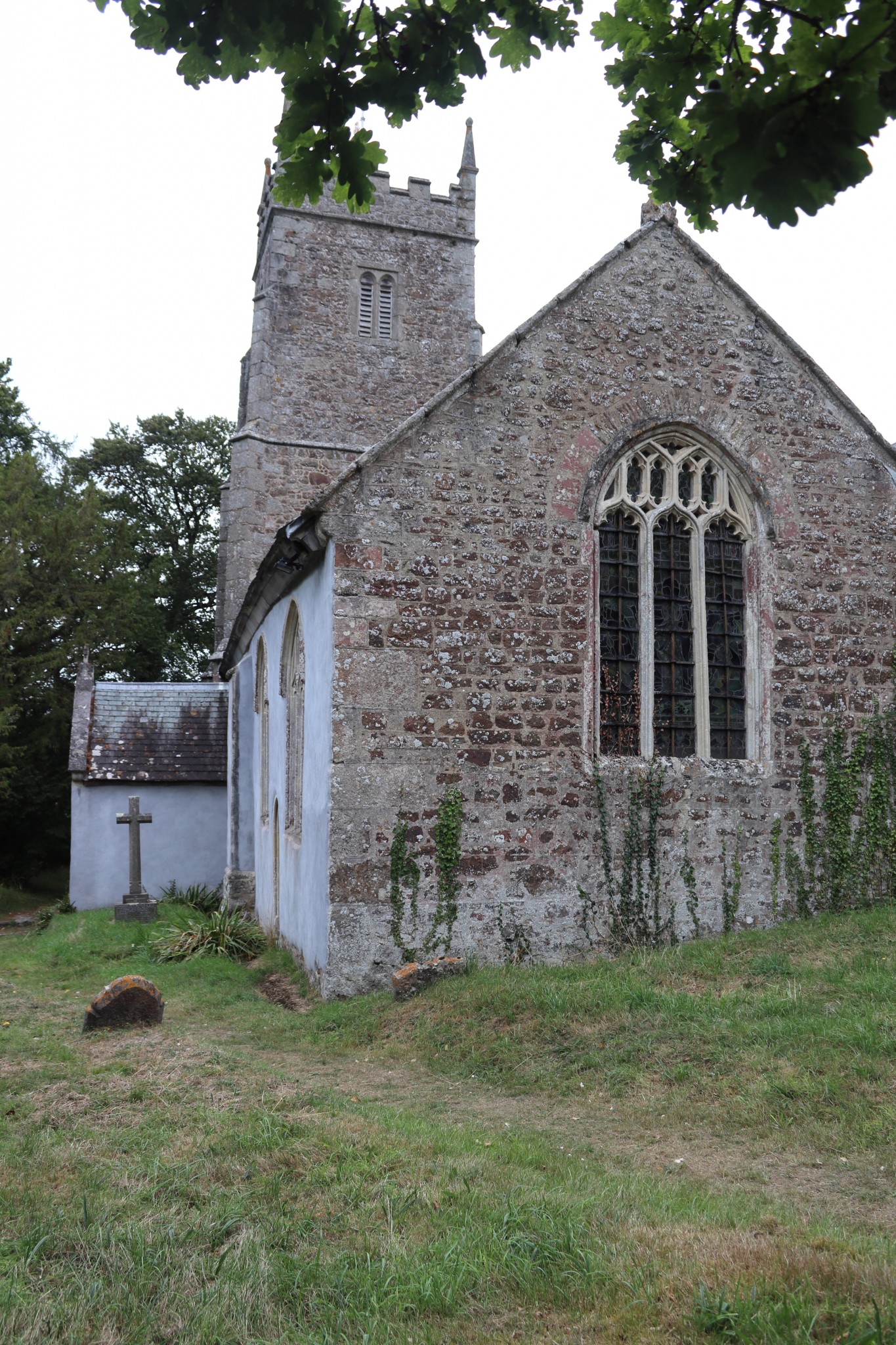St John The Baptist, Higher Ashton, Devon

The little church of St John the Baptist, at Higher Ashton in Devon would appear to be a place with an identity crisis. Pevsner and Cherry, the accepted guide to English buildings, refers to it as St Michael. Nicholas Orme, in his scholarly survey of English Church Dedications, finds it named as the Store of St John the Baptist in 1539, but with a tantalising reference to St Nectan occurring in a will of around 1544. Whatever the confusion, the local and enduring dedication is to St John, firmly lettered on the signboard.
Unfortunately, though the signage is clear and the churchyard easily accessible in the centre of a small settlement, the building itself is seldom open except for services. The reason for this reticence is that the building (which is listed grade 1) though modest from the outside, contains painted wall plaster, a screen decorated on both sides, and the finest collection of medieval glass outside Exeter cathedral. Gratifyingly, it also contains quite a lot of graffiti compared with the usually modest amount to be found in Devon churches.
The church is thought to have been built in its entirety in the era of Bishop Lacy (1420-55) and was the family chapel of the Chudleighs, whose monuments feature on the walls, and who created an interior which in the words of the listing document is ‘outstanding for Perpendicular fittings, painting and stained glass’. Best of all, from the point of view of anyone wishing to carve a symbol, they used the beautiful, costly, easily carved Beer stone for the pillars and the window tracery.
[Not a valid template]The entrance to the south porch features large blocks of soft local red sandstone; easily marked, but difficult to engrave with any detail. On each side a series of parallel lines have been gouged, a feature which occurs fairly frequently in Devon buildings when this stone occurs in an external doorway. Suggestions either that these are natural or the result of archers sharpening their arrows, do not hold water given the site specific nature of the marks, or their very even layout: in this case, three grooves per side. Failing a Beerstone arch at the main (south) door, the more stoic graffiti carvers have used the back of the oak door instead.
[Not a valid template]The tower arch is granite, with moulded responds and capitals, and seems to have escaped marking, but the unusually elaborate 5-bay Beerstone arcade shows a good range of markings. Generally there are Marian marks and initials, with occasional butterfly marks, and there is a particularly clear heart with a 17th century date and some initials close to it, which may be linked. in a number of areas graffitos overlie each other, and in one the density is such that it is difficult to disentangle the mix. Star among the graffiti at Ashton has to be a mysterious construction that appears to comprise a bow shape, approximately 20cm high and a primitive, horizontal, figure which appears to have stick like arms and legs. It is impossible to tell whether this is a human being propelled in some sort of flight, a schematic representation of a bird or perhaps a primitive illustration of an angel.
[Not a valid template]The roodscreen has eight bays of 15th century date with a replacement coving from a restoration in the early twentieth. In addition to the series of conventional figures on the west front of the screen there are exceptionally fine large figures on the east side and in the parclose to the north of the chancel.
The final location for graffiti at Ashton is the external arch of the priest’s doorway, in the south wall of the chancel. The three plank door, judged to be seventeenth century, has not been marked but the soft stone arch has. Marian marks and initials predominate, although an odd figure occurs on the west side of the arch which might be either a stonemasons mark or the beginnings of a merchant’s mark.
[Not a valid template]Report by Rebecca Ireland
Church of St John the Baptist
Higher Ashton
Exeter
EX6 7QS.
Search terms: grooving, triple score mark, chevrons, heart, date, 1779, 5 point star, Marian marks, butterfly mark, mystery graffito, overlaid graffitos, painted screen, ledger stones, initials: A, C, D, H, I, M, N, O, R, T, WA, MC, ID, CH, IRH, IR, RR, WR.
